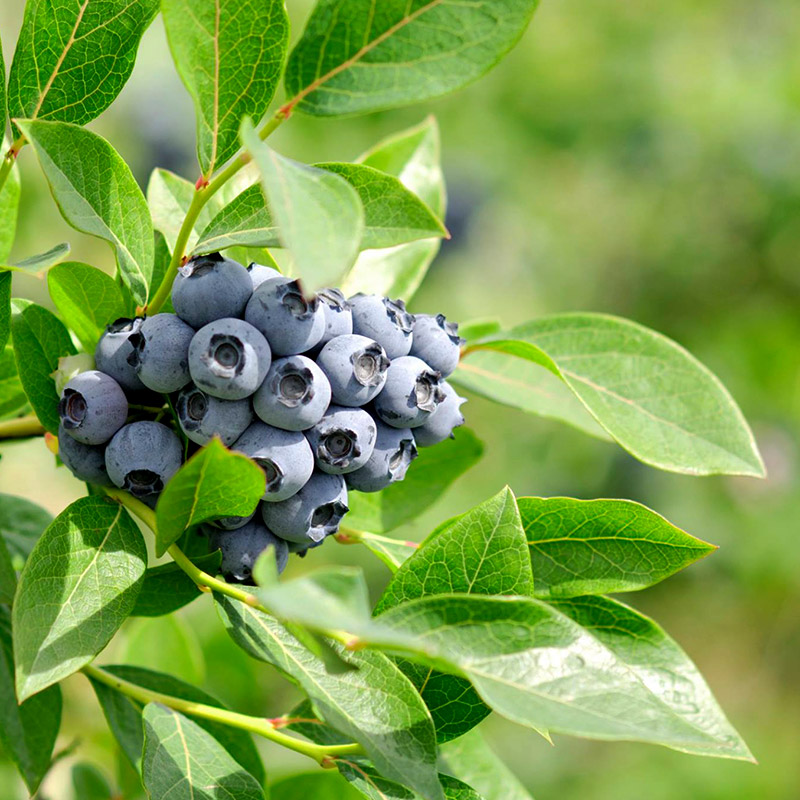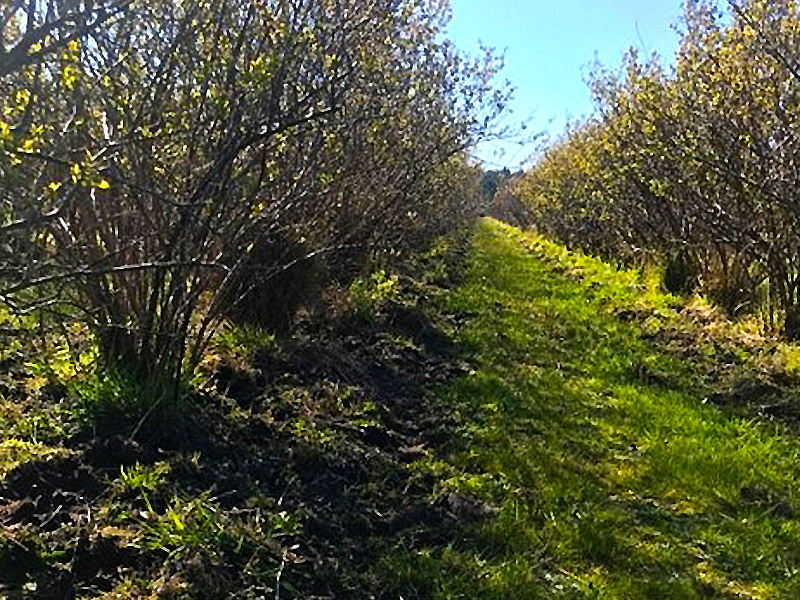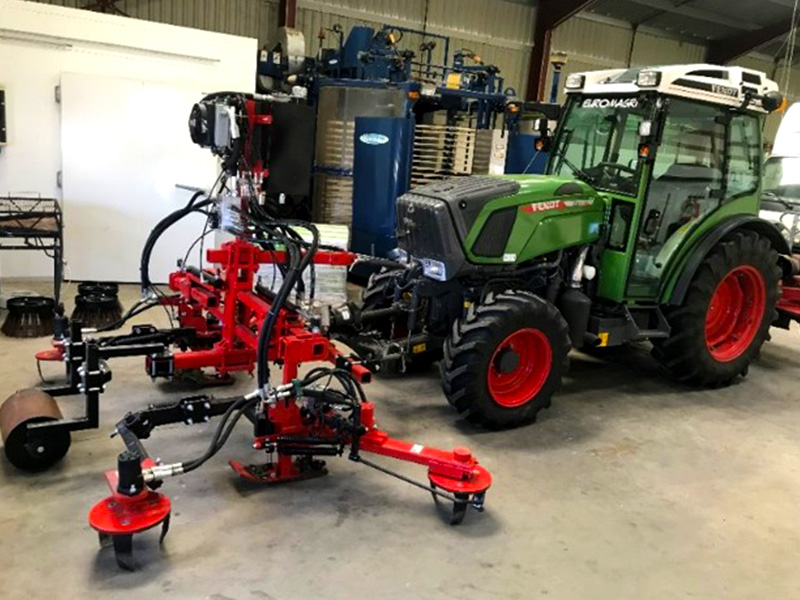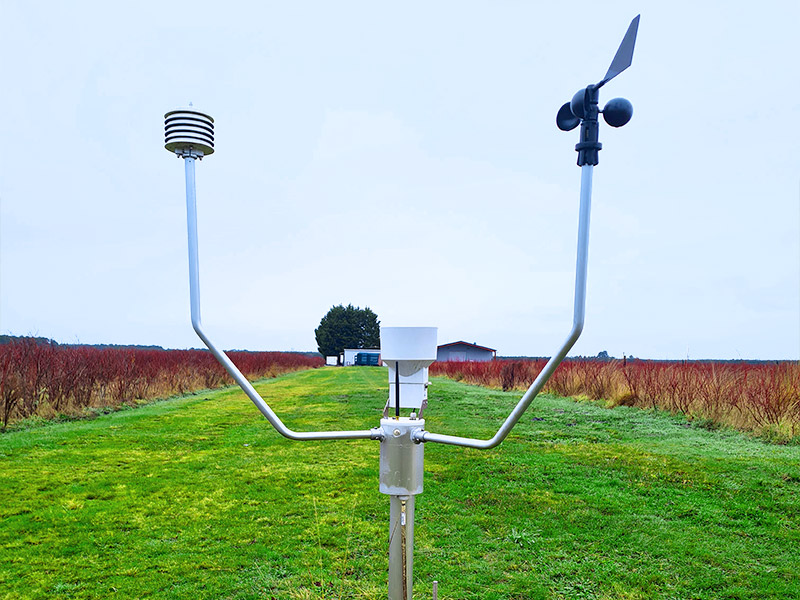Production

The Blueberry
The blueberry is the fruit of the species Vaccinium corymbosum selected on the American continent during the 19th century. It is a shrub that can reach up to 2 meters high. The fruits are formed on a cluster (the corymb).
The size varies according to the variety, as does the taste, more or less sweet and sour. The cultivated blueberry is a plant of heath ground preferring an acid, light, and porous soil. It requires a sunny exposure and needs water in summer.
These conditions make the Landes de Gascogne a preferred cultivation area because it offers naturally good soil quality and a climate that allows harvesting over a long period of summer.
Our 6 varieties of organic blueberries!
Late midseason harvest
Slightly acidic
Semi-early harvest in early June
Tart taste, fragrant fruit
Early harvest end of May
big and very fragrant fruit with a tangy taste
Harvested from mid-June to the end of July
Very good conservation
Very productive variety
Medium size berry, light blue
Semi-early harvest
Very good taste
Nutritional Qualities of Blueberries :
Blueberries provide vitamin E, vitamin C, and especially record levels of flavonoids.
These specific substances include several molecules known for their antioxidant properties: catechin, biflavans.
These compounds are involved in the defense of blood vessels and promote blood fluidity, thus contributing to the protection against cardiovascular diseases.
The red-violet pigments, anthocyanins, are also very abundant (400 to 500 mg/100 g) in blueberries. They are just as valuable since they potentiate the activity of vitamin C.
The blueberry is an interesting source of fiber (3 to 5 g/100 g). These are appreciated by the body and ensure a regulating action on the intestines.
Our Bees
In early spring, over a million bees and bumblebees pollinate the flowers
Bees are almost essential to the pollination of blueberries. Bees tend to remove more pollen from blueberries because they vibrate the flower during their visit, called “sonication”.
The bee is known as the best pollinator and for good reason. It can gather pollen from 250 flowers per hour and store 500,000 grains of pollen on a single leg.
Whether wild or domestic, of the 100 species of plants that are part of our food resources, the bee pollinates 71 of them alone.
Our Equipment
We have a complete weather station (meteus) allowing us to measure air temperature, ground temperature, rainfall, and wind strength.
We also have two tensiometers that control the humidity of the soil and allow us to control the irrigation as accurately as possible and thus not waste water.
- Tractor shredder
- Rotary brush for weeding blueberry vines
- For a surface work of the soil…
Maintenance
The pruning of the blueberry is very simple. It consists in periodically cleaning the shrubs to keep them vigorous and fruitful.
The best time to prune blueberries is at the end of winter and early spring. February-March is usually the best time.
Important: A branch does not produce more than 3 or 4 years in a row, and each branch produces only on 2-year-old or previous year’s wood.
Note also that the most vigorous stems, generally growing from the base, are the ones that will give the best blueberries. It is then advisable to prune the branches when they no longer produce.
You will therefore prune the branches older than 3 years.
You should also remove the weakest branches.
Finally, remove the dead wood and let the maximum amount of light into the heart of the blueberry.
The blueberry appreciates cool soils and should be watered regularly in case of drought or strong heat.

For reasons of maintaining biodiversity, soil life and limiting erosion and leaching, we practice total and permanent grassing. The grasses, which we have selected for the grassing of our plantation, greatly improve the surface structure of the soil.
The economic objective is to reduce material and energy inputs.
We carry out three mowing operations during the year and one passage of mechanical weeding in the row.




